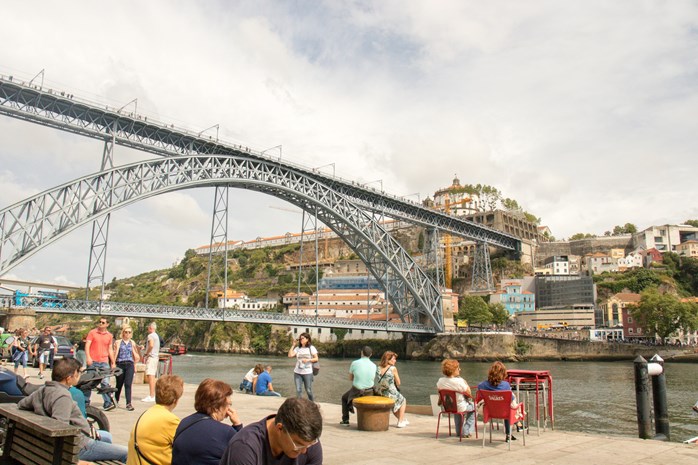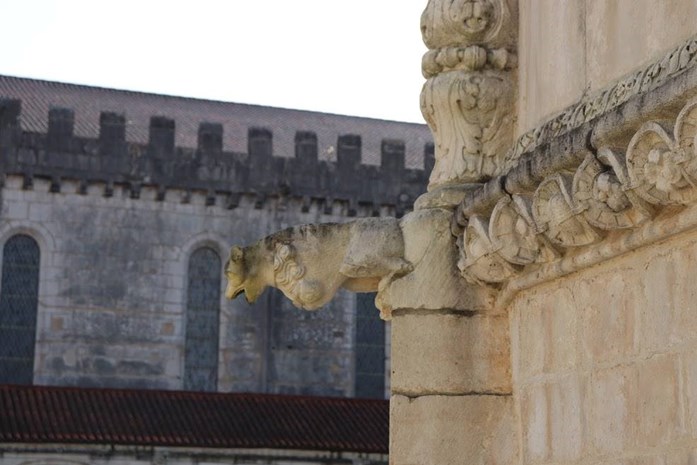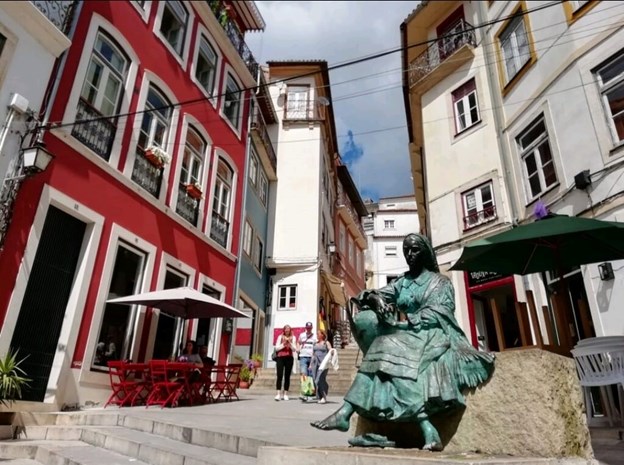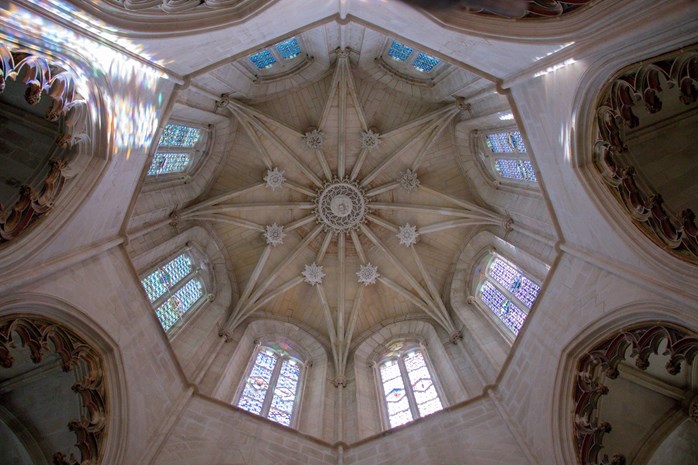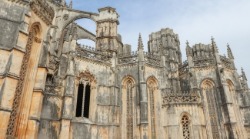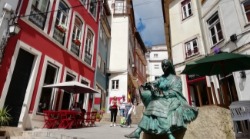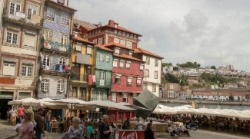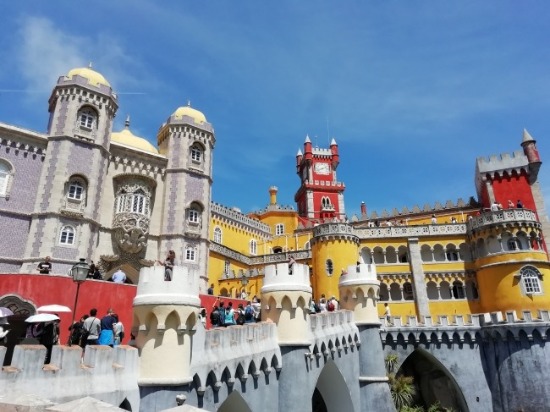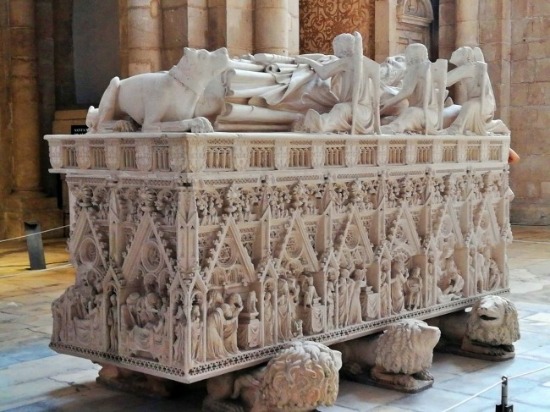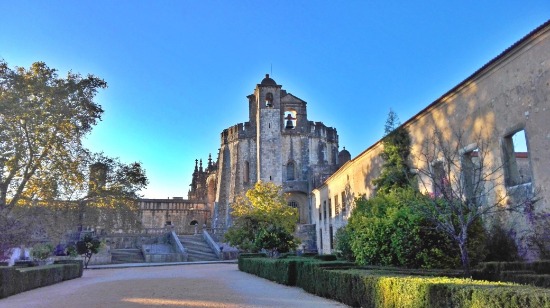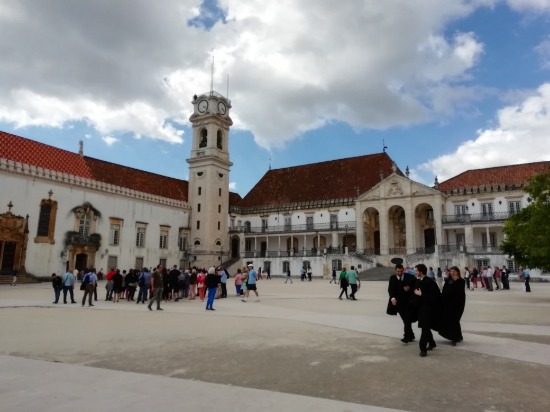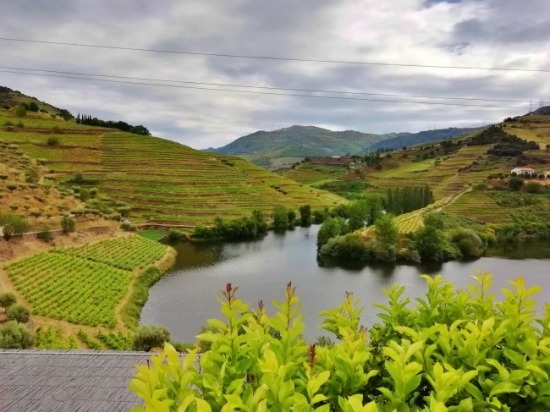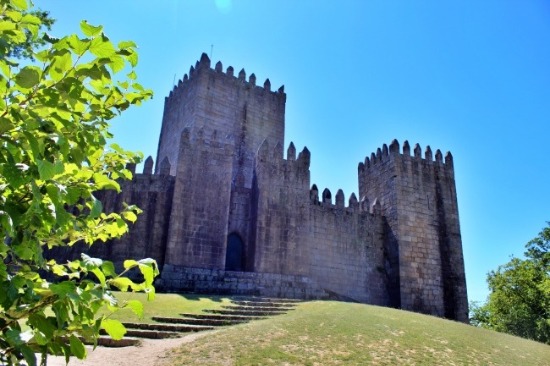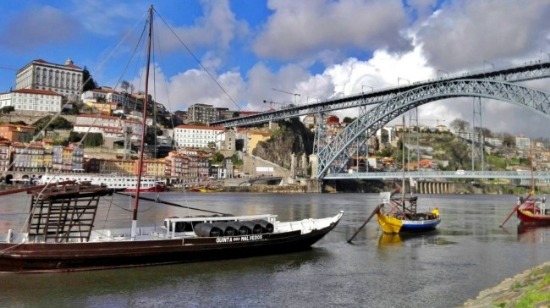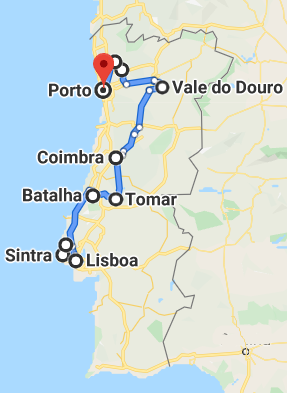PORTUGAL: UNESCO WORLD HERITAGE
Travelling all over Portugal during 7 days Windland Tours will present you 11 places considered World Heritage Sites such as the Cultural Landscape of Sintra; the Monastery of Jerónimos and Tower of Belém, Lisbon; the Mafra Palace; Monastery of Alcobaça; Monastery of Batalha; the Convent of Christ, Tomar; the University of Coimbra - Alta and Sofia; the Alto Douro Wine Region; the historic center of the city of Guimarães. In the city of Braga, the Bom Jesus Sanctuary; the historic center of Porto and the Luís I Bridge.
The best of both worlds: pleasure and knowledge!
PLACES TO VISIT
Day 1 - Lisbon. Sintra
Starting our day at 9h 30m. First we'll visit one of the coolest neighborhoods of Lisbon and the oldest, too - Alfama.
Narrow streets and alleys, with a medieval moorish heritage. Here you'll have a scenic view from the top of the hill.
Descending the slopes to Pombaline downtown you'll have a scenic view of the entire city. After the big Earthquake, in 1755, the medieval Lisbon in ruins was redesigned with a geometrical pattern, large avenues and well organized neighborhoods. Here, you can count with streets full of life, lovely shops and 18th buildings full of charm.
Now we're next the waterfront of Lisbon, going to Belém district. We anticipate the Padrão dos Descobrimentos, the Monastery of Jerónimos and the Tower of Belém, in a modern city full of life and color.
Classified by UNESCO in 1983, the Monastery of Jerónimos was built by Dom Manuel I in the 16th century. This monument is essential to appreciate the Manueline style - sailing knots, ropes, ringed spheres, crosses of the Military Order of Christ and naturalistic features - exclusive of Portugal and celebrating the Age of Discoveries.
The Tower of Belém was in the past a protection and river defense structure. It was classified by UNESCO in 1983 as a World Heritage Site. This defensive structure, in the river estuary, surprises with its decoration. Once again, Manueline.
What about a short break full of flavour?
Let's go and try the pastry of Belem in the ancient and famous Pastéis de Belém Shop. It's the only place where you can try this secret recipe that guarantees you a unique but unforgettable experience. We'll continue to the village of Sintra.
Sintra surprises you with places where Man and Nature have been living in a perfect relation through the ages, preserving the magic of Sintra Hill.
Climbing the mountain by car we can see stunning green landscape and Pena Palace stands out, right in the middle, with its bold colors and Gothic/Renaissance decorative elements. At the top of the hill, the Moorish Castle. There we advise you to take a deep breath and let yourself be inspired by the beauty of the surroundings.
One of the most romantic places in Portugal. Classified as World Heritage by UNESCO, in 1995.
After a break in the historic center of the romantic village of Sintra we recommend you to taste the traditional pastry Queijada de Sintra or the cherry-based liqueur Ginjinha.
Overnight in Lisbon.
Day 2 - Mafra. Alcobaça
9h30, leaving Lisbon to Mafra.
Mafra is a pleasant town some kilometers north of Lisbon. Definitely, our trip will be a rewarding sightseeing experience. Town of good bread and refreshing sea breeze - a royal personal choice of King Dom João V, in the 18th century, to spend summer with his family. From a modest existing building, the franciscan convent evolved into a lavish royal palace.
The Basilica - with its six organs - and its, no less famous, Library - with about 40.000 volumes - will help us to understand why it was classified, in 2019, by UNESCO as a World Heritage Site.
Following into the Western Region of Portugal, we have as final destination of the visits planned for this day, Alcobaça.
Also a small and friendly town, in which the usual Portuguese convent pastries are not lacking, in all small cafes and terraces overlooking the Monastery of Alcobaça.
No less appealing in this city is the theme of the love experienced between King Dom Pedro and Inês de Castro. The Alcobaça Monastery is one of the most well-known European Cistercian abbeys. It was classified by UNESCO in 1989.
From the 12th century, and closely linked to the foundation and expansion of Portugal and its territory, it impresses visitors for its simplicity and light, but also for its greatness; the austerity of architectural features and the breathtaking details carved on stone of the tombs of Pedro and Inês de Castro - two magnificent tombs built to immortalized this tragic love.
Overnight in Alcobaça or Batalha. It's your choice.
Day 3 - Batalha. Tomar
In the village of Batalha you will find one of the most beautiful Portuguese monuments - the Monastery of Santa Maria da Vitória.
This Monastery is also popularly known as Monastery of Batalha, alluding to the decisive Battle of Aljubarrota, between the Kingdom of Portugal and Castile - 1385 - from which Portugal emerged victorious and with a consolidated independence from Spain of nowadays.
This magnificent building presents itself as an authentic passport for time travel: from the Middle Ages, to the Age of Discoveries. Rest assured that this masterpiece of gothic and stone lacy, Manueline - rehearsed in this place, for the first time, in Portugal, will surprise you, for sure.
Classified by UNESCO in 1983.
The city of Tomar invites you to stroll along the banks of the Nabão River; a drink, in one of the streets and squares, with tile facades or Art Nouveau; or even, a walk through medieval jewish neighborhood. But, what is most pulsating in this city is the Templar heritage.
It will be in the Convent of Christ that we will find the gems of Knights Templar - such as the Templar Church, with an octagonal shape called “Charola”; memories of the Order of Christ; Henry the navigator Age; at its peak, Manueline Art; the specificity of Portuguese Renaissance architecture and, still, the Mannerist and Baroque features of this architectural ensemble.
The Convent of the Order of Christ and the Templar Castle make a unique monumental ensemble.
It was classified by UNESCO as a World Heritage Site in 1983.
Overnight in Batalha or Tomar.
Day 4 - Coimbra
The day starts, at the usual hour, in the City of Knowledge as Coimbra is also known since the Middle Ages.
Bathed by the Mondego River, it is famous for its University and Joanine Library; students in their black cloaks and serenades; the Monastery of Santa Cruz de Coimbra - where the first King of Portugal, Afonso Henriques, rests; the New Cathedral; the Old Cathedral and the historic center.
UNESCO classified the University of Coimbra - the oldest in Portugal [1290] and one of the oldest in Europe; the Joanine Library and Alta de Coimbra; as well as Rua da Sofia, in 2013.
Free afternoon for you explore the City. We suggest a visit to the Joanina Library.
Overnight in Coimbra.
Day 5 - Alto Douro Wine Region
Green in summer and golden in winter, the slopes of the Douro River won't leave anyone indifferent. We will take the road that connects the city of Régua to the place of Pinhão, considered by AVIS, World Best Driving Road - the best road in the world to drive!
On this day, you cannot miss a visit to a wine producing farm and a stop at the nineteenth century Railway Station of Pinhão, with its captivating more than three thousand tiles alluding to the Douro landscape.
If you wish, a scenic boat trip on the river, a train ride on the river banks or a visit to the Port Wine Museum can be arranged.
This is one of the oldest demarcated wine regions in the world, and therefore classified by UNESCO since 2001.
Man's work - shaping the valley in terraces - transformed the Alto Douro Wine Region, into a unique and inspiring landscape for the production of internationally recognized wines.
Overnight in Guimarães.
Day 6 - Guimarães
Free morning in Guimarães.
Today our meeting time will be 2:30 pm. In Guimarães we present you the birthplace of the Portuguese nation.
The squares of the historic center - Praça da Oliveira and Praça de Santiago - flanked by facades reminiscent of medieval times. We will go up to the highest part, where the Guimarães Castle is located - originating from the orders of the famous Countess Mumadona to build a fortress to protect the monks who lived in a nearby Monastery; and later, with the parents of the first King of Portugal, it became a residence and Afonso Henriques was born there.
Next to the Castle, the São Miguel do Castelo Church, where the first King of Portugal will have been baptized; the Dukes of Bragança Palace - 15th century manor house, with its porcelain collections from the Companhia das Índias, among other rarities.
UNESCO considered that the importance that the city of Guimarães has in the construction of the Portuguese identity and the state of preservation of its archaic civil constructions - inspiring for the construction of those times - were a reason for classification, in 2001.
You can choose the city of Guimarães to spend a quiet evening or the city of Braga if you prefer to explore its amazing streets full of life until 22 p.m.
Day 7 - Braga. Porto
Last day of our multi-day tour. Missing it already?
The day starts in the beautiful city of Braga. Here, we find the oldest Cathedral in the country.
The flowered Avenues Central and Liberdade; the Palácio do Raio that will enchant with its blue-tiled façade; as well as, all its historical center that makes us travel, sometimes, to the period of the Roman Empire.
But the visit to Braga, could not end, without the Sanctuary of Bom Jesus, where you can enjoy a wide view over this capital of the Minho region.
It was considered by UNESCO to be an architectural and landscape complex of world interest, and therefore classified, in 2019.
Arriving Porto we'll have a relaxed walking tour from Aliados avenue to Ribeira, you cannot miss the Cathedral; the Clérigos Tower; Santa Catarina Street and its Café Majestic; the famous São Bento Station and the not less famous Bookshop Lello which inspired Harry Potter's author. At Carmo Church square we won't be indifferent to the Lions Fountain.
We cross the Luís I bridge, looking towards the waters of the Douro River and the Rabelo Boats. Gaia awaits us with its magnificent Port Wine Cellars and the most appetizing Portuguese snacks called 'Petiscos' at the Gastronomic Market.
But it will be the riverside area of the city or “the Ribeira” as they call it - where the narrow and colorful houses descend from the top of the city, to the waters of the Douro - the most characteristic neighborhood and the one that makes the city go around in the world, in images .
Classified by UNESCO in 1996, the city of Porto and its harmonious historical set will present you with a river full of life, in its 850 kilometers of extension between Portugal and Spain and navigable, since the Roman Empire.
PRICE
2 PERSONS - 2350€ | 3 PERSONS- 2650€ | 4 to 8 PERSONS- 700€ per person
CHILDREN up to 12 years - 100€
Additional information:
- Minimum of 2 adults to make the tour
- The duration of each day of guided tour is 8 hours
Included
- Passenger and luggage transportation in SUV or Van, with AC
- 7 days of private tour with guide service in Portuguese, English or Spanish
- 1 free afternoon and 1 free morning
- Daily bottle of water, 33 cl/pax
- Travel insurance
- Beginning of the tour in Lisbon and ending in Porto, or the other way around. There is also the alternative of starting and ending in the region of Fátima - Tomar - Nazaré.
Not Included
- Accommodation and meals
- Tickets to National Monuments or any other
- Personal expenses
- Everything that is not described in the Included section

